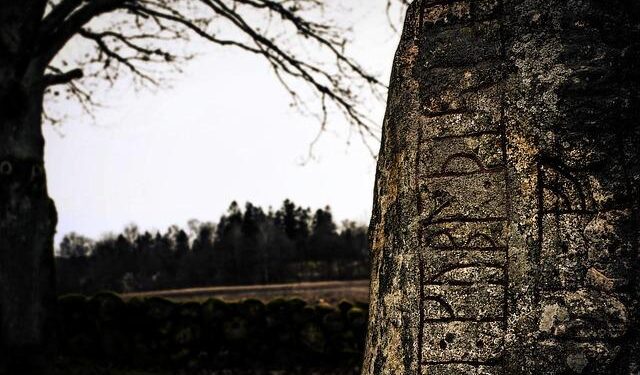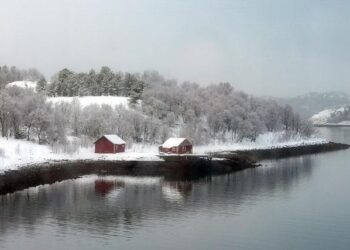Archaeologists in Norway have uncovered a remarkably well-preserved Viking Age woman’s grave, shedding new light on the lives of women during this pivotal era. The discovery, announced this week, offers valuable insights into the social status, burial customs, and daily lives of Viking women, challenging longstanding assumptions about gender roles in Norse society. Excavated at a significant archaeological site, the grave includes an array of artifacts that promise to deepen our understanding of Viking culture and its complexities.
Discovery Sheds Light on Viking Age Women’s Roles and Status
Recent excavations in a remote part of Norway have uncovered a richly furnished grave believed to belong to a high-status Viking Age woman. Artifacts including intricately crafted jewelry, weapons, and household items suggest her prominent role in society, challenging previous assumptions about gender roles during this period. The grave’s elaborate nature and diverse array of objects indicate that Viking women could hold significant power, influence, and autonomy within their communities.
Among the remarkable items found were:
- A bronze key, possibly symbolizing control over a household or communal space
- Ornate brooches displaying craftsmanship linked to high social rank
- Weapons typically associated with male burials, hinting at defensive or warrior roles
These findings add complexity to our understanding of Viking society’s social fabric. A comparative analysis of grave goods across different sites revealed patterns in the distribution of wealth by gender, summarized below:
| Artifact Type | Female Graves (%) | Male Graves (%) |
|---|---|---|
| Jewelry | 85 | 20 |
| Weapons | 35 | 90 |
| Household Items | 75 | 25 |
Artifacts Reveal Unique Burial Practices and Social Connections
Excavated artifacts shed new light on burial customs during the Viking Age, showcasing a blend of ritual significance and social hierarchy. Among the grave goods, a finely crafted bronze brooch, intricately woven textile fragments, and unique jewelry pieces suggest the woman held a prominent status within her community. These items, carefully arranged around the coffin, indicate a ceremonial practice that intertwines personal identity with spiritual beliefs. The presence of imported goods, including Baltic amber beads and Scandinavian iron tools, points to far-reaching trade networks and social connectivity that extended beyond local borders.
Analysis reveals a deliberate selection of objects, reflecting both the deceased’s social role and the complex relationships maintained during her lifetime. The assortment of items –
- Bone combs symbolic of personal grooming rituals
- Glass beads signifying wealth and cultural exchange
- Weapon fragments possibly representing familial or protective affiliations
– not only emphasizes the diversity of material culture but also offers clues to the interconnectedness of Viking communities. Detailed examination of the burial assemblage advances understanding of gender roles and social networks within Scandinavia’s early medieval societies.
| Artifact | Material | Possible Significance |
|---|---|---|
| Bronze Brooch | Bronze | Status symbol & ornamental use |
| Baltic Amber Beads | Amber | Trade connection & wealth indicator |
| Iron Tools | Iron | Utility & sign of social role |
Experts Call for Enhanced Preservation and Further Multidisciplinary Analysis
Archaeologists and historians emphasize the urgent need for robust preservation efforts to safeguard the newly discovered Viking Age woman’s grave, citing the site’s delicate condition and the rich cultural information embedded within. Experts recommend employing advanced conservation techniques that minimize exposure to elements while maintaining the site’s integrity for future study. The integration of state-of-the-art technologies such as 3D scanning, DNA sequencing, and isotopic analysis could dramatically deepen understanding of Viking social structures, trade networks, and health in the era.
Furthermore, calls for a multidisciplinary approach have grown louder, advocating collaboration between archaeologists, bioarchaeologists, material scientists, and historians to unlock the grave’s secrets. Proposed areas of examination include:
- Microscopic analysis of textile fragments
- Residue testing on grave goods
- Stable isotope analysis to trace diet and migration
- Radiocarbon dating refinements
| Analytical Focus | Expected Insight | Current Status |
|---|---|---|
| DNA Analysis | Lineage and population links | Pending |
| Isotope Testing | Dietary habits and mobility | Planned |
| Textile Examination | Material origin and craftsmanship | Ongoing |
Closing Remarks
The discovery of the Viking Age woman’s grave in Norway offers a compelling glimpse into the lives of women during this dynamic period. As archaeologists continue to analyze the site, the findings promise to deepen our understanding of Viking society and its diverse roles. This remarkable excavation not only enriches the historical narrative but also underscores the invaluable contributions of women in Viking Age communities. Further updates are anticipated as research progresses.
















